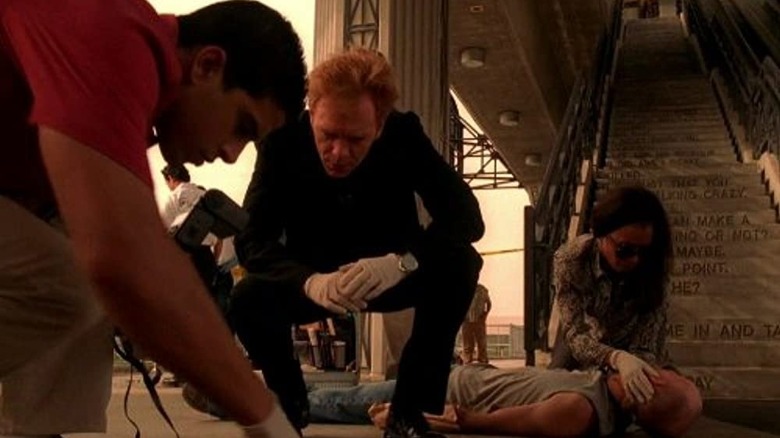What CSI: Miami Gets Wrong About Investigations
"CSI: Miami" was once one of the most popular television series in the world (via BBC). Following the exploits of a specialized crime scene investigation unit, the series stars David Caruso, Adam Rodriguez, and Emily Procter. Based in and around Miami-Dade county, "CSI: Miami" tackles hard-hitting crime, with the characters often utilizing their varied skills in order to solve cases and catch the perpetrators. Forensics, psychology, and street-smarts combine in a wondrous display of police work.
Premiering in 2002 and running for 10 seasons, "CSI: Miami" won two Emmys and was nominated for over 40 awards in total during its time on-air (via IMDb). The show was part of the "CSI" franchise from CBS, which also included "CSI," "CSI: New York," and the 2021 revival "CSI: Vegas." All of the series share the same core premise, but each show has a different location and vibe. We already know that the original "CSI" didn't always get things right when it came to its depiction of forensic investigations, but what about "CSI: Miami"?
What did CSI: Miami get wrong about investigations?
Even though it may seem like a great idea to make a show like "CSI: Miami" as realistic as possible, one key aspect has to change for the sake of brevity, that being the time it takes for things to actually get done. In the show, the officers are often able to quickly get the results of tests or clear bureaucratic hurdles within each episode. However, each component of the forensic investigations often take way longer than how they are portrayed in the series.
According to a report by the Connecticut Office of Legislative Research, a sampling of forensics labs showed aspects of forensic investigations can have an average turnaround time of anywhere from 56 to 169 days. Forensic biology had an average turnaround of 123 days, tracing averaged 56 days, fingerprints averaged 169 days, and firearms averaged 136 days. On "CSI: Miami," these results come in way quicker for the sake of keeping the plot moving and to make the story easier to follow. If each episode was constantly referencing past cases and waiting for the results, the series may not have become the breakaway success that it was.
If you look at those average turnaround times, it becomes apparent that if the show stuck to an ultra-realistic depiction of forensic investigations, each episode would have taken place over the course of many months. Considering that "CSI: Miami" ran for over 200 episodes, the timeline would have reached into the far future if the show would have stayed true to the average real-life time of police work.

